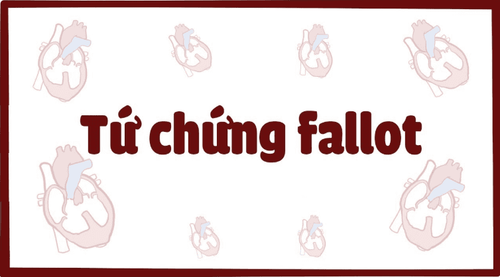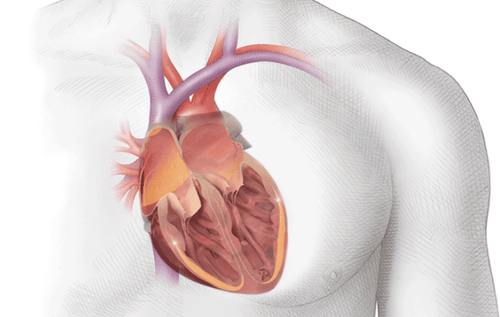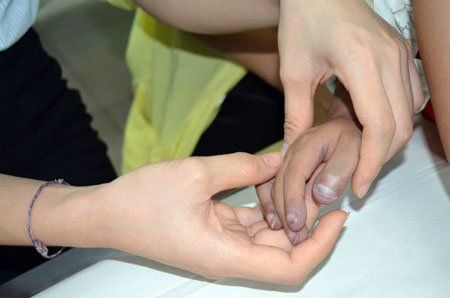This is an automatically translated article.
The article is professionally consulted by Cardiology & Thoracic Surgery doctors - Cardiovascular Center - Vinmec Central Park International General Hospital.Tetralogy of Fallot is the most common disease in the group of cyanotic congenital hearts. Early diagnosis and treatment of tetralogy of Fallot helps many children return to normal lives.
1. Is Tetralogy of Fallot dangerous?
All children diagnosed with tetralogy of Fallot need radical surgery. Without treatment, your baby may not grow well. In addition, the baby may experience many serious complications such as infective endocarditis, syncope, arrhythmia...
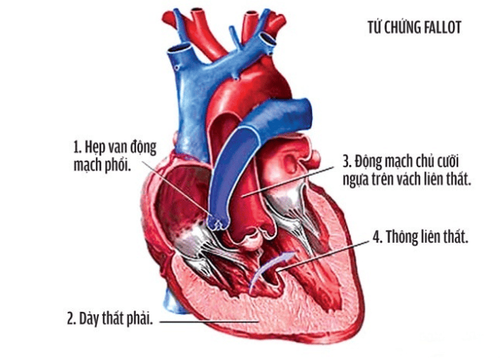
Tổn thương của tứ chứng Fallot
2. Diagnosis of tetralogy of Fallot
2.1 Ask about Heart disease: When it appears, cyanosis is more often when exerted or when it is cold. Shortness of breath on exertion. Squatting relieves shortness of breath on exertion. Cyanosis usually occurs before the age of 2 years. Slow walking, slow growth, malnutrition. 2.2 Medical examination Children with developmental delay. Drumstick fingers, cupped nails. Skin of the heart. Heart examination. Examination for complications: Brain embolism, brain abscess, infective endocarditis. 2.3 Subclinical chest X-ray: A typical sign of tetralogy of Fallot on radiographs is an enlarged heart, because the right ventricle is dilated. Electrocardiogram: Simple right ventricular hypertrophy, 2 ventricular hypertrophy can be seen in non-cyanotic form. Cardiac Doppler echocardiography: The ventricular septal defect is the peri-membrane part. The aorta rides up the interventricular septum. Pulmonary stenosis: funnel stenosis, pulmonary valve stenosis (must measure the diameter of the funnel, annulus and 2 pulmonary artery branches). Doppler ultrasonography confirms the extent of pulmonary stenosis by measuring differential pressure across the funnel and pulmonary valve. It is necessary to investigate on ultrasound for the presence or absence of the following lesions: Pulmonary artery stenosis, multiple ventricular septal defect, atrial septal defect, continuous flow in the pulmonary artery indicating ductal or circulating ducts. pulmonary vasculature. Identify associated lesions such as atrial septal defect, ventricular septal defect... Cardiac catheterization: Before surgery, all patients with tetralogy of Fallot should undergo cardiac catheterization to identify obstruction of the right ventricular outflow tract. stenosis of the proximal pulmonary artery or its branches, and rule out abnormalities in the origin and path (if any) of the coronary arteries. Blood count: Red blood cells, Hb, Hct increase, platelets may decrease.

Bác sĩ sẽ thăm khám lâm sàng và cho làm các xét nghiệm, kiểm tra để chẩn đoán bệnh cho trẻ
3. Methods of treatment
Principles of treatment Complete surgical repair. Prevention and treatment of medical complications. 3.1 Prevention and treatment of medical complications Temporary in nature, alleviating symptoms, preparing for surgery.
3.2 Surgery Surgery is an effective treatment for tetralogy of Fallot. There are two types of surgery that can be performed, including radical repair or temporary surgery. Most babies and children need radical repair of the heart defect.
Complete repair This surgery is usually done within the first year of life. During surgery, the surgeon places a patch over the interventricular septum to close the hole between the two ventricles, while also correcting the narrowing of the right ventricular outflow tract and widening the pulmonary artery to increase blood flow to the lungs. After the repair, the oxygen level in the blood increases and the baby's symptoms subside.
Temporary surgery Sometimes babies need to undergo temporary surgery before they are fully repaired. If your baby was born prematurely or has an underdeveloped (hypoplastic) pulmonary artery, doctors will create a shunt between the aorta and the pulmonary artery. This increases blood flow to the lungs. When the baby is ready for intracardiac repair, the shunt is removed.
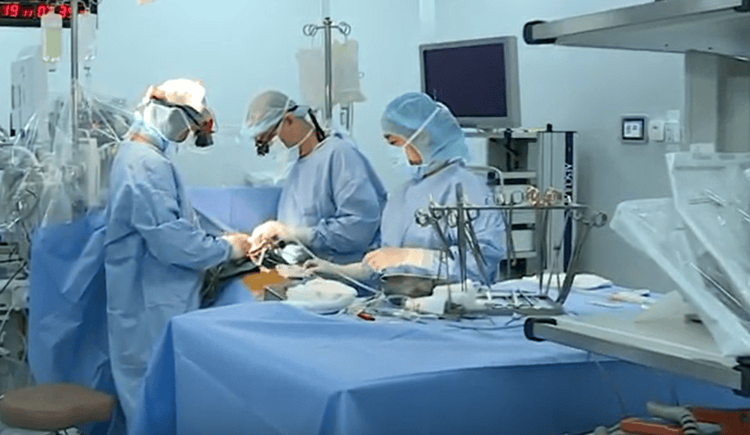
Một ca phẫu thuật tại Bệnh viện Đa khoa Quốc tế Vinmec
Vinmec Central Park Hospital is a reliable address for surgery to treat tetralogy of Fallot. Cardiovascular Center of Vinmec Central Park International Hospital has successfully treated more than 200 surgical cases of congenital heart patients < 5 kg and with very complex malformations: transposition of the great arteries, right ventricle 2 outlet, common trunk, aortic arch rupture... with the support of modern diagnostic equipment, Maquet's HR20 Cardiopulmonary System, Avance CS2 Anesthesia Machine, R860 Ventilator of GE, the world's most modern IGS730 Hybrid Operating Room
The advantages of tetralogy of Fallot congenital heart surgery are:
After the repair in the heart, the oxygen level in the blood increases and the patient's symptoms decrease. Helps restore cardiovascular functions, prolonging patient's life.
Please dial HOTLINE for more information or register for an appointment HERE. Download MyVinmec app to make appointments faster and to manage your bookings easily.




